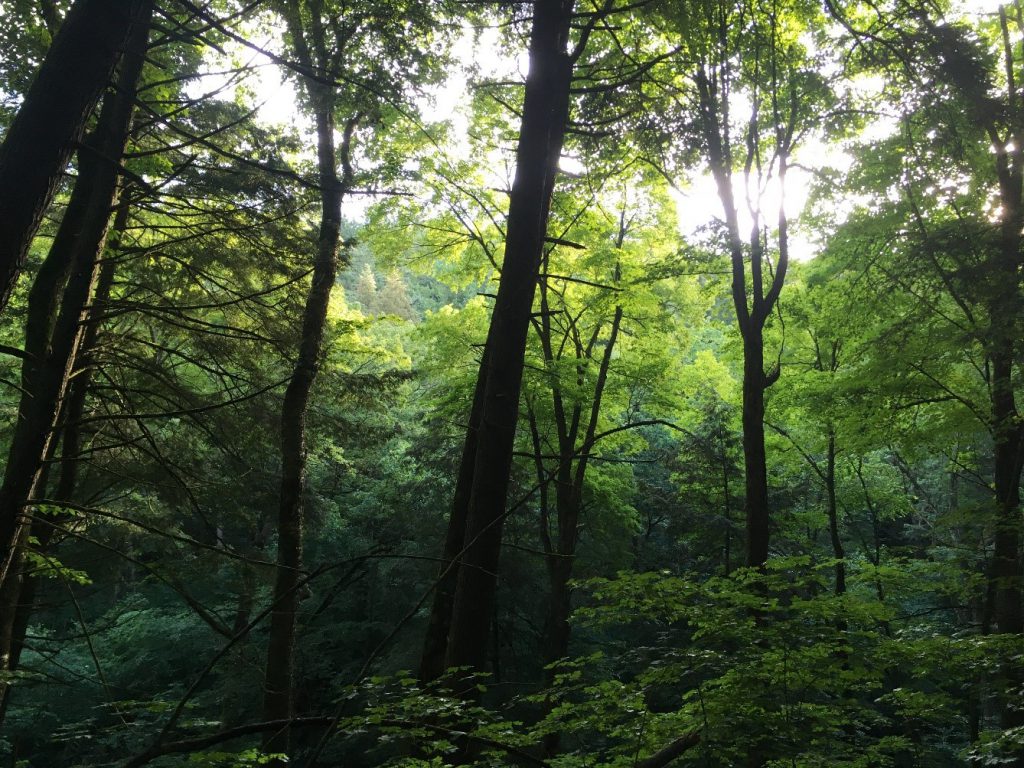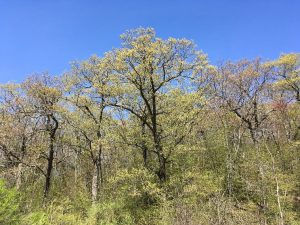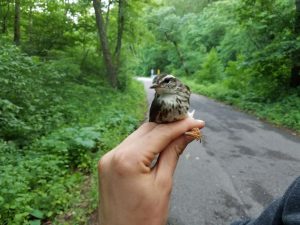Posted 02/6/19
Quality of forest songbird habitat is shaped by many factors. In her research, Maia Persche investigates the influence of topography on spring phenology, and tries to understand how this relates to seasonal invertebrate abundance and bird distribution. Preliminary results suggest that sheltered stream gorges support higher bird species richness, and stable invertebrate abundance throughout the spring and summer.

While walking through a forest in spring we often marvel at the vivid greenness, listen to birdsong, and mind our steps in order not to get into a spider’s web. Enjoying the moment, we usually do not think about the complexity of this environment, nor the intertwined relations among all of its elements. However, what slips our attention is not going unrecognized by Maia Persche – a Master’s candidate in the SILVIS lab. In her research, Maia seeks to discern the role of topography in the timing of vegetation growth onset within forest, and to understand how topographic position potentially shapes songbird habitat.

To gain insight into these questions, Maia undertook the challenging tasks of measuring tree phenology, and conducting invertebrate and bird surveys in her study area in the Baraboo Hills of Southern Wisconsin. In order to relate these data to each other, each type of survey was carried out at the same 70 locations during narrow time windows throughout the season. Tree phenology surveys occurred in April and May, and invertebrate and bird surveys were repeated throughout the bird breeding season, or until the end of July. At each location, additional data was collected on temperature, tree species composition, and site characteristics. Over the course of two field seasons, she detected 53 insectivorous bird species, and tracked the seasonal abundance of common invertebrate orders (Lepidoptera, Araneae, Hemiptera, Hymenoptera, Diptera and Coleoptera).

Based on only a portion of measurements collected, Maia has already drawn some interesting preliminary conclusions. Trees leafed out slightly later in stream gorges than in uplands, and although invertebrate biomass was related to tree phenology, it did not appear to follow a predictable yearly pattern. However, sheltered stream gorges supporteded high invertebrate biomass during the mid- and late summer. This could be important for double-brooded bird species that still have active nests in July and can be limited by food availability in some habitats. Overall, stream gorges supported the highest bird species richness, perhaps due to stable food resources or habitat complexity. Also, a strong association has become evident between particular tree species and invertebrate orders, suggesting that tree composition may be more important than topographic context for some folivorous invertebrates.

Under shifting climate conditions in deciduous forests, it is important to identify areas where habitat quality for species is likely to remain high. To assess bird territory quality in different topographic situations, Maia used feather growth bar analysis for a few widely distributed forest species (Wood Thrush, Red-eyed Vireo, and Ovenbird). She captured birds throughout her study area using mist nets, playback calls, and bird models. She then banded the birds, took structural measurements, and pulled one tail feather. Growth bars, or horizontal bands along the feather, correspond to diet richness of the bird while the feather was growing, and will be used to assess social dominance and habitat quality. Although this approach provides a detailed look at habitat quality, it is also the most difficult to carry out in the field.
Maia has collected a large amount of data, and analyzing the relationships among different factors and trophic levels is somewhat daunting, but she approaches it with great enthusiasm. Maia is currently working to determine how bird territory density varies according to topographic context. It is definitively worth staying tuned to see what new results Maia uncovers!
Story by Lewińska, Katarzyna Ewa
